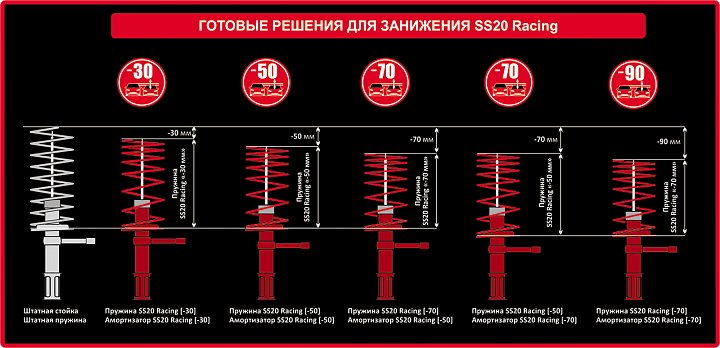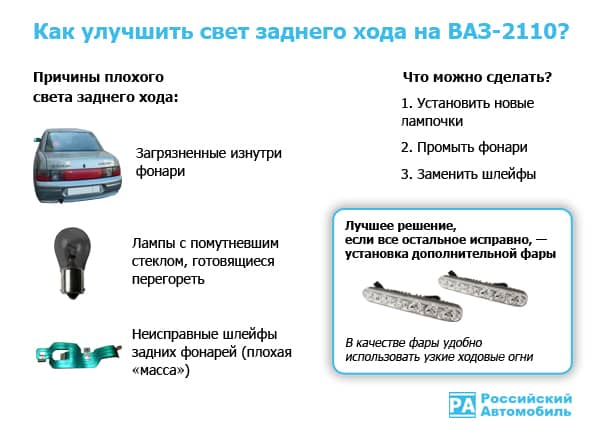
How to lower car suspension
Content
One of the most popular car modifications today is the lowering of the car's suspension. A car's suspension is usually lowered to increase its visual appeal and potentially improve handling...
One of the most popular car modifications today is the lowering of the car's suspension. A car's suspension is usually lowered to increase the car's visual appeal and potentially improve the handling it can provide.
While there are several ways to lower a vehicle's suspension, the two most common are using a replacement spring kit for coil spring models and using a block lowering kit for leaf spring vehicles.
Use the following steps to understand the process of lowering both types of suspension using basic hand tools, a few specialty tools, and the appropriate lowering kits.
Method 1 of 2: Lower the coil spring suspension using the lowering springs.
Many cars, especially compact cars, use coil spring suspension, and lowering them is simply a case of replacing standard coil springs with shorter ones that leave the car at a lower height at rest. These shorter springs are often stiffer than stock springs to give the suspension a sportier and more responsive feel.
Necessary materials
- Air compressor or other source of compressed air
- Pneumatic percussion gun
- Basic set of hand tools
- Jack and Jack stand
- Set of new lowered springs
- Socket set
- Strut spring compressor
- Wooden blocks or wheel chocks
Step 1: Raise the front of the car.. Raise the front of the car off the ground and secure it on jack stands. Place blocks of wood or wheel chocks under the rear wheels and apply the parking brake to prevent the vehicle from rolling.
Step 2: Remove Clamp Nuts. Once the vehicle is raised, use an impact gun and an appropriately sized socket to loosen the lug nuts. After removing the nuts, remove the wheel.
Step 3: Remove the vehicle's A-pillar assembly.. Remove the front strut assembly by removing the bolts that secure it at the top and bottom using wrenches or a ratchet and appropriate sockets.
While specific strut designs can vary greatly from vehicle to vehicle, most struts are usually held on with one or two bolts at the bottom and a few bolts (usually three) at the top. The top three bolts can be accessed by opening the hood and can be removed by loosening them from the top.
Once all bolts have been removed, pull out the entire strut assembly.
Step 4: Compress the strut spring. After removing the strut assembly, take the strut spring compressor and compress the spring to remove all tension between the spring and the strut top mount.
It may be necessary to constantly compress the spring in small increments, alternating both sides, until enough tension is released to safely remove the top leg of the strut.
Step 5: Remove the Compressed Coil Spring. Once the coil spring is sufficiently compressed, turn on the compressed air, take an air impact gun and an appropriately sized socket, and remove the top nut that secures the strut post to the strut assembly.
After removing this top nut, remove the top strut support and remove the compressed coil spring from the strut assembly.
Step 6: Install new coil springs to strut assembly.. Many lowering springs sit on the strut in a very specific way, so make sure you set the spring correctly when installing it on the strut assembly.
Be sure to replace all rubber spring seats if included.
Step 7: Replace the top rack mount.. Install the top strut mount onto the spring assembly over the new coil spring.
Depending on how lower your new coil springs are, you may need to compress the spring again before you can reinstall the nut. If so, simply compress the spring until you can install the nut, turn it a few turns, and then tighten with an air gun.
Step 8: Install the strut assembly back to the vehicle.. After assembling the strut assembly with the new lowering spring, install the strut assembly back to the vehicle in the reverse order of removal.
- Functions: It's easier to insert one of the bottom bolts to support the strut first, and then install the rest of the parts after the strut is attached to the car.
Step 9: Lower the Opposite Side. After reinstalling the strut to the vehicle, install the wheel and tighten the lug nuts.
Continue lowering the opposite side, repeating the procedure for the opposite strut assembly.
Step 10: Replace the rear springs.. After replacing the front springs, proceed to replace the rear coil springs using the same procedure.
In many cars, the rear coil springs will often be similar if not easier to replace than the front ones, and it just needs the car to be raised enough to release the tension and pull the spring out by hand.
Method 2 of 2: Lowering the Leaf Suspension with the Universal Lowering Kit
Some vehicles, mainly older cars and trucks, use leaf spring suspension instead of coil spring suspension. Spring suspension uses long metal leaf springs attached to the axle with U-bolts as the main suspension component that suspends the vehicle above the ground.
Lowering leaf spring vehicles is usually very simple, requiring only basic hand tools and a universal lowering kit available at most auto parts stores.
Necessary materials
- Basic set of hand tools
- Jack and Jack stand
- Universal set of lowering blocks
- Wooden blocks or wheel chocks
Step 1: Raise the car. Raise the vehicle and place the jack under the frame closest to the side of the vehicle you will be working on first. Also, place wood blocks or wheel chocks under either side of the vehicle you are working on to prevent the vehicle from rolling.
Step 2: Remove the suspension spring bolts.. With the vehicle raised, locate the two U-bolts on the suspension leaf springs. These are long, U-shaped bolts with threaded ends that wrap around an axle and attach to the underside of the leaf springs, holding them together.
Remove the U-bolts individually using the appropriate tools - usually just a ratchet and a matching socket.
Step 3: Raise the axle. Once both U-bolts are removed, grab a jack and place it under the axle near the side you are working on and continue to raise the axle.
Raise the axle until there is room between the axle and the leaf springs to lower the block. For example, if it's a 2" drop block, you'll need to raise the axle until there's a 2" gap between the axle and the spring to make room for the block.
Step 4: Install New U-Bolts. After installing the lowering block, take the new extended U-bolts from the lowering kit and install them on the axle. The new U-bolts will be slightly longer to compensate for the extra space taken up by the lowering block.
Double check that everything is aligned correctly, install the nuts on the universal joints and tighten them into place.
Step 5: Repeat steps for opposite side.. At this point, one side of your vehicle is down. Reinstall the wheel, lower the vehicle and remove the jack.
Repeat the same procedure as in steps 1-4 to lower the opposite side and then repeat it for the rear suspension.
Lowering a car's suspension is one of the most common modifications made today, and it can not only increase visual appeal, but even improve performance if done right.
Although lowering the car is a fairly simple job, it may require the use of special tools. If you don't feel comfortable taking on such a task, any professional technician can do it.
If after lowering the car you feel that something is wrong with the suspension, contact a certified mechanic, for example, from AvtoTachki, to inspect the suspension and replace the suspension springs if necessary.
